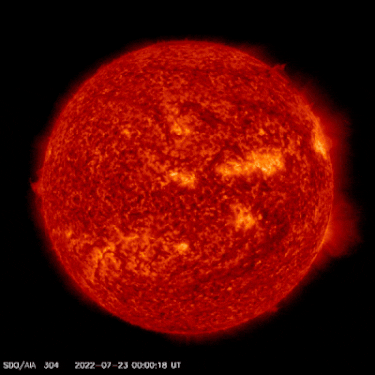Shortly after the James Webb Space Telescope launched, the Children’s Museum of Idaho transformed their learning playground into a weeklong treasure trove of space education.
During their Space Week event, they had space-themed activities galore! Inside they had JWST pictures projected onto the side of their rocket ship, and tables set up everywhere with tons of different coloring pages and activities. Outside, AstroTAC’s Ciera Partyka-Worley had a Coronado SolarMax solar telescope set up outside to let families safely look at the active surface of the sun. For many children and parents alike, it was the first time they really understood that the sun is a complex and dynamic celestial body.

Lucky for us, the sun was putting on quite the show that day! The sun goes through an 11 year solar cycle of solar activity. The more active the sun, the more features you’ll see. Currently we are in a solar maximum, meaning the sun is at its most active phase in its cycle. Giant eruptions on the sun, called solar prominences or coronal mass ejections, were frequent that day. When these eruptions face Earth, they send charged particles towards us that interact with Earth’s magnetic field. The result is a display we know as the Aurora Borealis.

The Children’s Museum is a place where children learn through play and exploration in environments and experiences created just for them. The interactive exhibits are designed to be manipulated by children and guided by an adult. This hands-on approach inspires young minds to take an active role that stimulates learning and addresses the developmental needs of children. The environments and experiences normally include an outdoor garage band, two chicken coops, a pneumatic tube system, a spaceship, a mini Trader Joes, and much more!
If you’d like to learn more about the Children’s Museum, please visit the Children’s Museum website!